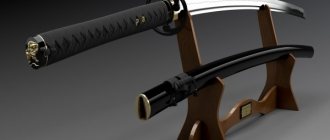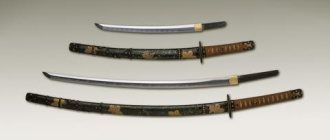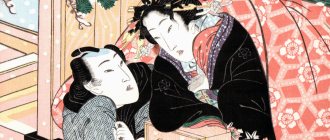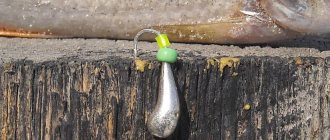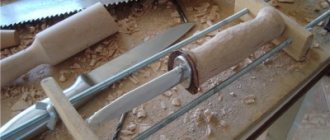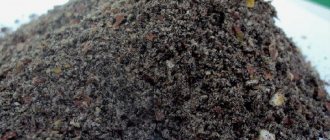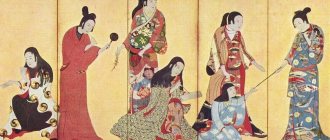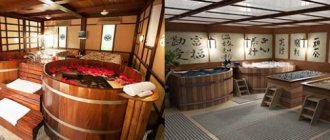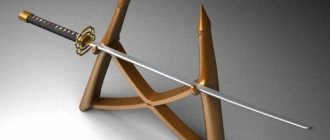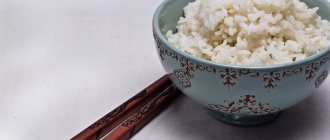Any story about historical edged weapons would be incomplete without a story about medieval Japanese swords. For many centuries, this unique weapon faithfully served its owners - the fierce samurai warriors. In recent decades, the katana sword seems to be experiencing a rebirth; interest in it is enormous. The Japanese sword has already become an element of popular culture; the katana is “loved” by Hollywood directors, creators of anime and computer games.
It was believed that the spirits of all its previous owners lived in the sword, and the samurai was just the guardian of the blade, and he was obliged to pass it on to future generations. The samurai's will always included a clause in which his swords were distributed among his sons. If a good sword had an unworthy or inept owner, then in this case they said: “The sword is crying.”
The history of these weapons, the secrets of their manufacture and the fencing techniques used by medieval Japanese warriors are of no less interest today. However, before moving on to our story, a few words should be said about the very definition of a samurai sword and its classification.
Katana is a long Japanese sword, with a blade length from 61 to 73 cm, with a slight bend in the blade and one-sided sharpening. There are other types of Japanese swords, mainly they differ in their dimensions and purpose. Moreover, the word “katana” in modern Japanese means any sword. If we talk about the European classification of edged weapons, then the katana is not a sword at all, it is a typical saber with a one-sided sharpening and a curved blade. The shape of the Japanese sword is very similar to a checker. However, in the tradition of the Land of the Rising Sun, a sword is any type (well, almost any) of a bladed weapon that has a blade. Even a naginata, similar to a European medieval glaive, with a two-meter handle and a blade at the end, is still called a sword in Japan.
It is much easier for historians to study the Japanese sword than European or Middle Eastern historical edged weapons. And there are several reasons:
- The Japanese sword has been used in the relatively recent past. The katana (this weapon had a special name gun-to) was widely used during the Second World War;
- Unlike Europe, a large number of ancient Japanese swords have survived to this day. Weapons that are several centuries old are often in excellent condition;
- The production of swords using traditional medieval technologies continues in Japan today. Today, about 300 blacksmiths are engaged in the manufacture of these weapons, all of them have special state licenses;
- The Japanese have carefully preserved the basic techniques of sword fighting.
Story
The Iron Age began relatively late in Japan; only by the 7th century did Japanese blacksmiths master the technology of making weapons from multilayer steel. Until this point, iron swords were imported into the country from China and Korea. The most ancient Japanese swords were most often straight and had a double-edged sharpening.
Heian period (IX-XII centuries).
During this period, the Japanese sword received its traditional curve. At this time, central state power weakened, and the country plunged into a series of endless internecine wars and entered a long period of self-isolation. A caste of samurai - professional warriors - began to form. At the same time, the skill of Japanese gunsmiths increased significantly.
Most of the fights took place on horseback, so the long saber gradually took the place of the straight sword. Initially it had a bend near the handle, later it shifted to an area 1/3 from the end of the shank. It was during the Heian period that the appearance of the Japanese sword was finally formed, and the technology for its manufacture was developed.
Kamakura period (XII-XIV centuries).
The significant improvement in armor that occurred during this period led to changes in the shape of the sword. They were aimed at increasing the striking power of weapons. Its top became more massive, the mass of blades increased. It became much more difficult to fencing with such a sword with one hand, so they were mainly used in foot fights. This historical period is considered the “golden age” for the traditional Japanese sword; later, many blade manufacturing technologies were lost. Today blacksmiths are trying to restore them.
Muromachi period (XIV-XVI centuries).
During this historical period, very long swords began to appear, the dimensions of some of them exceeding two meters. Such giants are the exception rather than the rule, but the general trend was evident. A long period of constant wars required a large number of edged weapons, often at the expense of a decrease in their quality. In addition, the general impoverishment of the population led to the fact that few people could afford a truly high-quality and expensive sword. At this time, Tatar furnaces became widespread, which made it possible to increase the total amount of steel produced. The tactics of fights are changing; now it is important for a fighter to get ahead of his opponent in delivering the first blow, which is why katana swords are becoming more and more popular. Towards the end of this period, the first firearms appeared in Japan, which changed the tactics of battles.
Momoyama period (XVI century).
During this period, the Japanese sword became shorter, and a pair of daishos came into use, which later became classic: the long katana sword and the short wakizashi sword.
All the periods described above belong to the so-called Age of Old Swords. At the beginning of the 17th century, the Age of New Swords (Shinto) began. At this time, many years of civil strife ceased in Japan, and peace reigned. Therefore, the sword somewhat loses its combat significance. The Japanese sword becomes an element of costume, a symbol of status. Weapons begin to be richly decorated, and much more attention is paid to their appearance. However, this reduces his fighting qualities.
After 1868, the Age of Modern Swords begins. Weapons forged after this year are called gendai-to. In 1876, the wearing of swords was prohibited. This decision dealt a serious blow to the samurai warrior caste. A large number of blacksmiths who made blades lost their jobs or were forced to retrain. Only at the beginning of the last century a campaign for a return to traditional values began.
The highest part for a samurai was to die in battle with a sword in his hands. In 1943, the plane carrying Japanese Admiral Isoroku Yamamoto (the same one who led the attack on Pearl Harbor) was shot down. When the charred body of the admiral was taken out from under the wreckage of the plane, they found a katana in the hands of the dead man, with which he met his death.
At the same time, swords began to be manufactured industrially for the armed forces. And although they outwardly resembled a samurai combat sword, these weapons no longer had any relation to the traditional blades made in earlier periods.
After the final defeat of the Japanese in World War II, the victors issued an order to destroy all traditional Japanese swords, but thanks to the intervention of historians, this was soon canceled. The production of swords using traditional technologies was resumed in 1954. A special organization “Society for the Preservation of Artistic Japanese Swords” was created, its main task was to preserve the traditions of making katanas as part of the cultural heritage of the Japanese nation. Currently, there is a multi-stage system for assessing the historical and cultural value of Japanese swords.
Varieties of tanto
There are a large number of varieties of tanto, each of them has its own name and specialization.
Hamidasi. This knife is practically no different from the classic tanto, except for a very small tsuba guard.
Aiguti (or yakutti). The “civilian” version of the tanto, which has the same shape and dimensions of the blade as the classic weapon, but is completely devoid of not only the guard, but also the traditional braid on the handle for swords.
Kubikiri. This dagger differs from the classic one in the almost complete absence of a pronounced tip and sharpening. Kubikiri usually has a cutting edge on the inside of the blade or it has a double-edged sharpening. There are several versions about how this knife was used. Literally translated, “kubikiri” means “head cutter.” It is possible that this blade was worn by samurai servants to collect ominous trophies on the battlefield - the heads of defeated enemies.
Kusungobu. This is a ritual dagger that was used for only one purpose - to commit seppuku or hara-kiri.
Kaiken. A type of tanto that was most often worn by women and used for self-defense. The weapon was hidden in the sleeve or behind the belt.
Japanese classification of swords
What other swords, besides the famous katana, exist (or existed in the past) in Japan. The classification of swords is quite complex; in the Land of the Rising Sun it refers to scientific disciplines. What will be described below is just a brief overview that gives only a general idea of the issue. Currently, the following types of Japanese swords are distinguished:
- Katana. The most famous type of Japanese sword. It has a blade length from 61 to 73 cm, with a rather wide and thick curved blade. Outwardly, it is very similar to another Japanese sword - tachi, but differs from it in the smaller bend of the blade, the way it is worn, and also (but not always) in length. The katana was not just a weapon, but also an invariable attribute of the samurai, part of his costume. The warrior simply did not leave home without this sword. The katana could be worn in a belt or on special ties. It was stored on a special horizontal stand, which was placed at the warrior’s head at night;
- Tati. This is a Japanese long sword. It has more bend than a katana. The length of the tati blade starts from 70 cm. In the past, this sword was usually used for mounted combat and during parades. Stored on a vertical stand with the handle down in peacetime and with the handle up during war. Sometimes one more of this type of Japanese sword stands out - O-dachi. These blades were significant in size (up to 2.25 m);
- Wakizashi. A short sword (blade 30-60 cm), which together with the katana forms the standard weapon of a samurai. The wakizashi could be used for fighting in tight spaces, and was also used in conjunction with a longsword in some fencing techniques. These weapons could be carried not only by samurai, but also by representatives of other classes;
- Tanto. A dagger or knife with a blade up to 30 cm long. Used for cutting off heads, as well as for committing hara-kiri, and for other, more peaceful purposes;
- Tsurugi. A double-edged straight sword that was used in Japan until the 10th century. This name is often given to any ancient swords;
- Ninja or shinobi-gatana. This is the sword that was used by the famous Japanese medieval spies - ninjas. In appearance, it was practically no different from a katana, but it was shorter. The sheath of this sword was thicker; the elusive shinobi hid a whole arsenal of spies in them. By the way, ninjas were not worn on the back, because it was extremely inconvenient. The exception was when a warrior needed his hands free, for example, if he decided to climb a wall;
- Naginata. This is a type of bladed weapon, which was a slightly curved blade mounted on a long wooden shaft. It resembled a medieval glaive, but the Japanese also classify naginata as a sword. Naginata fighting continues to this day;
- Gong something. Army sword of the last century. These weapons were manufactured industrially and sent in huge quantities to the army and navy;
- Bokken. Wooden training sword. The Japanese treat it with no less respect than a real military weapon.
Features of a real samurai sword
You cannot buy a real samurai sword at the nearest weapons store, although, of course, there are good combat models there, but they are very far from the true weapons of the samurai. Moreover, you will not be able to purchase them in souvenir shops that actively like to sell stylized Chinese consumer goods. And the main problem is the financial situation of each of us, and not at all the geography of blade production. Just one blade can cost as much as a pair of full-fledged A-Class Mercedes, and this is provided that you bargain with the master.
There are four features that distinguish a samurai sword from all others:
- Steel is always used for the blade; other metals are contraindicated.
- Only one side is sharpened.
- Slight bend along a V-shaped path.
- Legendary hardening and sharpening of metal.
And now we come to the concept of the classification of samurai swords. On the one hand it is easy, but on the other it is not so simple. It is easy because there are few complex formulas and it will be understandable to anyone. It’s complicated because there are several of them and sometimes they can contradict each other. Therefore, dear reader, do not be surprised by the inconsistencies.
Making a Japanese sword
There are legends about the hardness and sharpness of Japanese swords, as well as about the blacksmithing art of the Land of the Rising Sun itself.
Master gunsmiths occupied a high place in the social hierarchy of medieval Japan. Making a sword was considered a spiritual, almost mystical act, so they prepared for it accordingly.
Before starting the process, the master spent a lot of time in meditation, he prayed and fasted. Often, blacksmiths wore the robes of a Shinto priest or a court ceremonial costume while working. Before the forging process began, the forge was thoroughly cleaned, and amulets were hung at its entrance, designed to scare away evil spirits and attract good ones. While working, the forge became a sacred place; only the blacksmith himself and his assistant could enter it. During this period, family members (except women) were prohibited from entering the workshop, while women were not allowed to enter the forge at all, for fear of their evil eye.
When making a sword, the blacksmith ate food cooked on a sacred fire, and there was a strict taboo on animal food, strong drinks, and sexual contacts.
The Japanese obtained metal for the manufacture of edged weapons in Tatar furnaces, which can be called a local version of an ordinary domnitsa.
Blades are usually made of two main parts: a shell and a core. To make the sword's shell, a package of iron and high-carbon steel is welded together. It is folded and forged many times. The main task of the blacksmith at this stage is to achieve homogenization of the steel and clean it of impurities.
For the core of a Japanese sword, mild steel is used, and it is also forged many times.
As a result, to make a sword blank, the master receives two bars, made of durable high-carbon and soft steel. When making a katana from hard steel, a profile is formed in the shape of a Latin letter V, into which a block of soft steel is inserted. It is somewhat shorter than the overall length of the sword and does not reach the tip a little. There is also a more complex technology for making a katana, it consists in forming a blade from four bars of steel: the tip and cutting edges of the weapon are made from the hardest steel, a slightly less hard metal is used on the sides, and the core is made of soft iron. Sometimes the butt of a Japanese sword is made from a separate piece of metal. After welding the parts of the blade, the master shapes its cutting edges, as well as the tip.
However, the “main feature” of Japanese swordsmiths is considered to be sword hardening. It is the special heat treatment technique that gives the katana its incomparable properties. It differs significantly from similar technologies that were used by blacksmiths in Europe. It should be admitted that in this matter, Japanese masters have advanced much further than their European colleagues.
Before hardening, a Japanese blade is coated with a special paste made from clay, ash, sand, and stone dust. The exact composition of the paste was kept strictly secret and passed down from father to son. An important nuance is that the paste is applied to the blade unevenly: a thin layer of the substance was applied to the blade and tip, and a much thicker one was applied to the side edges and butt. After this, the blade was heated to a certain temperature and hardened in water. Areas of the blade covered with a thicker layer of paste cooled more slowly and became softer, and the cutting surfaces obtained the greatest hardness with such hardening.
If everything is done correctly, then a clear boundary appears on the blade between the hardened area of the blade and the rest. It's called jamon. Another indicator of the quality of the blacksmith’s work was the whitish tint of the blade’s butt, it is called utsubi.
Further refinement of the blade (polishing and grinding) is usually carried out by a special master, whose work is also highly valued. In general, more than ten people can make and decorate a blade; the process is very specialized.
After this, the sword must pass tests; in ancient times, specially trained people did this. Tests were carried out on rolled up mats and sometimes on corpses. It was especially honorable to test the new sword on a living person: a criminal or a prisoner of war.
Only after testing the blacksmith stamps his name on the tang, and the sword is considered ready. Work on mounting the handle and guard is considered auxiliary. The katana handle was usually covered with stingray skin and wrapped with a silk or leather cord.
The fighting qualities of Japanese swords and their comparison with European swords
Today the katana can be called the most popular sword in the world. It is difficult to name another type of bladed weapon around which there are so many myths and outright fairy tales. The Japanese sword is called the pinnacle of blacksmithing in the history of mankind. However, one can argue with such a statement.
Research conducted by specialists using the latest methods has shown that European swords (including those of the ancient period) were not much inferior to their Japanese counterparts. The steel that European blacksmiths used to make weapons turned out to be no worse refined than the material of Japanese blades. They were welded from many layers of steel and had selective hardening. When studying European blades, modern Japanese craftsmen were involved, and they confirmed the high quality of medieval weapons.
The problem is that very few examples of European bladed weapons have survived to our time. Those swords that are discovered during archaeological excavations are usually in poor condition. There are particularly revered European swords that have survived centuries and are today in museums in good condition. But there are very few of them. In Japan, due to the special attitude towards edged weapons, a huge number of ancient swords have survived to our time, and the condition of most of them can be called ideal.
A few words should be said about the strength and cutting characteristics of Japanese swords. Without a doubt, the traditional katana is an excellent weapon, the quintessence of the centuries-old experience of Japanese gunsmiths and warriors, but it is still not capable of cutting “iron like paper.” Scenes from films, games and anime where a Japanese sword effortlessly cuts stones, plate armor or other metal objects should be left to the conscience of the writers and directors. Such abilities lie beyond the capabilities of steel and contradict the laws of physics.
If you have any questions, leave them in the comments below the article. We or our visitors will be happy to answer them
“Buy mochi from a mochi maker; for rice cakes, go to the cake maker" (Japanese proverb)
We can endlessly “dig” into the details of the Japanese sword and... it will still be interesting. In general, this is a real “Pandora’s box”; it’s not for nothing that Japanese swords have so many fans. But this is not surprising. Every detail in them is not only functional, but also beautiful. But this is not at all easy to achieve. Behind this there are centuries of reflection about beauty, comprehension of the measure of things, the ability to feel the material and work with it.
Let's look at this again - the line at the tip, which is called boshi. How beautiful are these waves on polished steel! This hardening line also has its own name - midari-komi, that is, “wavy”. Although, it would seem, this is a completely utilitarian thing. By the way, here we see a naginata blade, not a tachi or katana.
But this photo shows the kissaki - the actual tip, the hardened part of the blade (yakiba), and the hardening line - boshi, separating the hardened blade ha (or ha-saki) from the blade itself - ji-tsuya. It is darker, but the hardened part is lighter and the Japanese, naturally, distinguish them. The light part is called ha-tsuya and is practically the same as yakiba. In any case, we will not be mistaken in calling this part of the blade either way. But there is also a yokote line - separating the tip and the blade. As you can see, everything in the Japanese sword is very, very complicated. A lot of terms describing the width of the blade (mihaba), its surface pattern (jihada), the name of the butt of the blade at the tip (mune-saki) and so on. Khada pattern. From it, an experienced master could recognize the author of the sword without even reading his signature on the tang of the nakago. Naturally, the shank of the nakado blade of the nihonto was also not a completely utilitarian part. In the photo you see such a shank from a wakizashi blade with the signature mei. Noteworthy are the notches on the surface of the shank. They also had a special name - yasuri-me. There are 13 types of them and they are all different from each other. And they were made for a reason, but in order to ensure stronger contact of the wooden handle with the shank. The name of the blacksmith could be stamped on the shank - kao, “name with title” (zuryo-mei), if the blacksmith worked at court, the age of the blacksmith, his pseudonym, the name of the assistant (dai-mei), poetry (!), the name of the temple to which the blade was dedicated, and the result of the test was how many corpses were cut with how many blows by this sword. It’s good that they never wrote it all together on one shank. A dozen hieroglyphs is already a big text! This photo shows a beautiful 25.1 cm long Hamidashi dagger with the emblem of the Tokugawa clan. Very similar to tanto... but not tanto. The difference is the absence of tsuba. Instead there is a small roller and that’s it. A ko-gotana with an engraved metal handle is inserted into the sheath. Noteworthy is his blade with a fuller (hee). There were eight types of fullers running along the entire blade and four fullers at the shank. Tanto dagger from the collections of the British Museum, disassembled. A blade with a long fuller is kuitigai-hi. From left to right: tsuba, seppa, habaki, kari-kogai - a kogai divided in the middle (about it in the previous article), and the “knife” of the ko-gotan. Also a seemingly inconspicuous detail on the blade of a Japanese sword or dagger, but of great importance is the habaki - the fastening sleeve of the blade. Here we see mekugi-ano - a hole for a mounting pin. And here this detail (habaki) is clearly visible, firmly securing the tsuba. This is what the habaki looks like when this part is removed. But it’s interesting - it’s not entirely smooth. It has raised stripes. For what? For some reason...
The habaki coupling has the least artistic merit, but it is absolutely necessary, and it is found on every Japanese sword, dagger and even on spears. It is a thick metal sleeve, which is designed in such a way that its inner side fits tightly to the last few centimeters of the blade of a sword or dagger and also its tang (nakago). It has several functions: first of all, it eliminates friction of the blade and, first of all, its hardened part on the surface of the sheath. The blade of the sword under the habaki should be lightly lubricated with oil to protect this area from corrosion. But the main function of the habaki is that it allows the impact of the blow to be transferred through the tsuba guard to the entire handle, and not to the mekugi peg made of bamboo or horn.
Habaki were usually made of copper, coated with silver or gold plated, or gold or silver foil, as well as shakudo alloy foil. Its surface is either polished or covered with oblique strokes of neko-gaki (“cat scrapers”). The foil can be decorated with a stamped pattern. Habaki with the Mon family crest are usually included in good swords.
Habaki close-up. Two seppas and a tsuba. Habaki rested against seppu and thus pressed her against the handle of the tsuke. But not straight to the handle... Sometimes a mon - coat of arms was stamped on the habaki. Habaki with smooth polish. Directly behind the seppa, facing the handle, there was another clutch - futi. Fuchi covers the handle where it comes into contact with the seppa. This part can be easily removed. But despite all its utilitarian purpose - to strengthen the end of the handle, it is a small work of art. It is finished in pairs with another part, which is called kashira (Japanese “head”). (Walters Art Museum, Baltimore) Slot for the tang of a footy blade. Since the futi was made by a separate master (together with the kashira), it was signed by him on the outer side adjacent to the seppa coupling. (Walters Art Museum, Baltimore) Hole in handle for cashier's head. Kasira - “The Sparrow and the Orchid.” (Walters Art Museum, Baltimore) Both futi, kashira, and tsuba had to be designed in the same style. But this rule was not always observed. Tsuba "Hares". (Metropolitan Museum of Art, New York) A very important thing is the mekugi mounting pin. It was on it that the entire rim of the Japanese sword was supported! It prevents the blade from falling out of the hilt. The material is usually wood (!), bamboo, but sometimes it is made from rhinoceros horn. On one side of the handle it is hidden by winding, on the other it is visible.
Menuki, on the contrary, is a decorative detail, but it seems to help to grip the handle more tightly. Again, a sign of good taste of the owner of the sword is the uniform design style of the kogai, ko-gotana and the menuki itself. Daisho-sorimono was the name of this complete set of two swords. Menuki are attached not only under the braid, but also simply on the covering of the handle.
Tsuka dagger tanto. And she's wearing menuki. All the above-mentioned details of the blade frame are also clearly visible. Menuki large. Samurai loved to give them to each other (of course, complete with other parts). As they say, it’s a small thing – but it’s nice. A very original tanto-yari dagger - the “spear dagger” of the Edo era. All details of the koshirae - frame are shown: sheath, hilt, braid, vari-kogai, go-gotana.
Jutte is, in fact, neither a dagger nor a knife, since it has a cylindrical or multifaceted blade without a blade and without a point. Jutte was a special type of Japanese police force from the Edo era. With a blade with a side hook, they caught the enemy’s sword and thus could tear it out of their hands or then break it with a blow from the second blade. A lanyard with a colored tassel was attached to the ring on the handle, the color of which indicated the rank of the policeman.
Jutte dagger in the frame of a tanto dagger. The Japanese loved cases and cases. In front of you is a sword case in which it was kept during the journey. It was called katana-jutsu.
Yes, the Japanese sword is a whole thing that you can dive into for a long time and... very deeply. But we will end our “immersion” here for now.
There are many legends about Japanese swords, often unjustified. Probably a lot of people, when asked what the name of a Japanese sword is, will answer - Katana. This is partly correct, but only partly. Classifying Japanese swords is not an easy task. The simplest classification, in my opinion, is by length.
It is known that the samurai carried two swords - long and short
.
Such a pair was called Daisho
(literally “larger and smaller”) and consisted of Daito (“larger sword”), we will call it Katana, which was the main weapon of the samurai, and Seto (“smaller sword”), in the future Wakazashi, who served as a spare or an additional weapon used in close combat, for cutting off heads or hara-kiri, if the samurai did not have a Kusungobu or Tanto dagger specially designed for this. If only samurai and aristocrats were allowed to wear the large Katana sword, then artisans and merchants had the right to wear Wakazashi.
Kusungobu - melee dagger
So the long sword was called Daito (Katana)
- 95-120 cm, short -
Seto (Wakazashi)
- 50-70 cm. The Katana handle is usually designed for 3.5 fists, Wakazashi - for 1.5. The blade width of both swords is about 3 cm, the thickness of the back is 5 mm, while the blade has a razor sharpness. The handle is usually covered with shark skin or wrapped in such a way that the handle does not slip in the hands. Katana weight is about 4 kg. The guard of both swords was small, only slightly covering the hand, and had a round, petal or multifaceted shape. It was called "tsuba".
Katana and other Japanese swords were stored on a special stand - Katanakake.
Katana has several varieties, one of them is Ko-katana (kokatana) - a variant of a short katana, included together with a katana in a regular samurai set of edged weapons. The handle of the kokatana is straight without a bow, the blade is slightly curved. The specimen described in the domestic literature has a length of 690 mm and a blade length of 520 mm.
Kokatana is a type of katana
The katana was attached to the belt or behind the back. Tied with a special Sageo cord, this cord could also be used to bind the enemy. To carry a katana behind the back, a special sheath was used (Watarimaki is the part of the sheath of a Japanese bladed weapon that touches the back when worn). The sheath has a coupling - a ring that covers the sheath, with the help of which it is attached to a sword belt or belt.
Katana is the most modern and advanced type of Japanese edged weapon; its production has been improved over the centuries; the predecessors of the katana were:
- Tati
- a sword common in Japan from the 10th to the 17th centuries, equal in length to the Katana. Although Katana swords also have a decent amount of blade curvature, it is generally less curvature than Tati's. Their external decoration also differs. It is much simpler and stricter than Tati’s. Has a round tsuba. The tachi was usually carried with the blade facing down in tandem with a koshigatana.
Tanto
- small samurai sword.
Kozuka
- Japanese combat knife used as a bladed or throwing weapon. In everyday life it served as a household knife.
Ta-chi
- a single-edged sword of slight curvature, worn behind the back. Total length 710 mm.
In addition to Daise, a samurai could also wear Nodachi - a “field sword”
with a blade more than a meter long and a total length of about 1.5 m, sometimes its length reached three meters! Several samurai wielded such a sword at once, and its only use was to defeat mounted troops.
Nodachi
Katana is the strongest sword in the world
The technology for producing a katana is very complex - special processing of steel, multi-layer (multiple) forging, hardening, etc. Katanas are the strongest swords in the world, they are capable of cutting materials of almost any hardness, be it meat, bones, iron. Masters skilled in the art of fighting with a katana in a battle with a warrior armed with an ordinary European sword could cut this sword into two parts, the force of a samurai’s blow and the steel of a katana allowed this to be done (Monuchi is the part of the blade blade of a Japanese bladed weapon, which accounts for the main force blow).
The katana could be used to stab and chop equally easily. The long handle allows you to actively maneuver the sword. In this case, the main grip is the position when the end of the handle rests in the middle of the palm, and the right hand holds it near the guard. The simultaneous movement of both hands allows you to describe a wide amplitude with the sword without much effort. Both the Katana and the straight European sword of a knight weigh a lot, but the principles for performing cutting blows are completely different. Most of the blows are delivered in the vertical plane. There is almost no division into “block-strike” accepted in Europe. There are knocking blows to the enemy's hands or weapons, throwing his weapon away from the line of attack and making it possible to deal a damaging blow to the enemy at the next step.
Weaknesses of the katana
Speaking about the features of the manufacturing technology of a samurai sword, it is worth noting the weaknesses of this process, namely, while gaining greater hardness and power along the axis of the blade, this type of sword is more vulnerable if hit on its flat side. With such a blow you can break the Katana even with a short mace (or Okinawan nunchucks, which were specially used to break samurai swords). And if a European sword usually breaks at a distance of a palm or two fingers from the guard, then a Japanese sword breaks at a distance of 1/3 or 1/2 of the length of the blade from the guard.
Yes, those stories are also true when metal was cut with a Katana. It's possible! It is documented that when a master struck with such a blade, the speed of the tip of the sword (Kisaki) exceeded the speed of sound
. And if you take into account the fact that Katana swords are among the most durable in the world, then the conclusion suggests itself.
In the house and on the street
As you know, in Japan there are a huge number of traditions, many of which directly relate to edged weapons. For example, when entering a house, a warrior never took off a short Japanese samurai sword. The Wakaji remained in its sheath as a reminder of the guest's combat readiness. With the katana (long sword) it was different. The samurai held it in his left hand if he feared for his own life. As a sign of trust, he could shift it to the right. When the warrior sat down, he also did not part with his swords.
On the street, the samurai carried a katana in a sheath called a saya. The mounting for the sword was called koshirae. If there was a need, the warrior never parted with his katana. However, in times of peace, the long sword was left at home. There it was stored in a special shirasaya assembly, which was created from untreated magnolia wood. It was able to protect the blade from corrosion.
If we compare the katana with its Russian counterparts, it most closely resembles a saber. However, thanks to the long handle, the first one can be used with two hands, which is a distinctive feature. A useful property of the katana is that it is also easy to deliver stabbing blows, since the bend of the blade is small and the blade is sharp.
Tati - a sword equal in length to a Katana
Japanese long sword tachi. The wavy hamon pattern on the blade is clearly visible.
The most ancient handmade katana (katana sheaths were also handmade and decorated with ornaments) are most valued and passed down from generation to generation as a family heirloom. Such katana are very expensive, especially if you can see Mei on it - a mark with the name of the master and the year of manufacture on the shank of a Japanese bladed weapon - of any famous master.
Many master gunsmiths from different countries tried to copy the katana, which resulted in such famous swords as: Three - a Tibetan sword copying a samurai sword; Taijinjian (Chinese sword of the great limit) is a type of jian; Korean sword, Japanese name katana in the 7th-13th centuries; etc. But real katana can only be found in Japan, and if a katana is not made in Japan, it is no longer a katana!
Tanto
Paired with the tati was a short sword, which could also be classified as a dagger. Tanto is a phrase, so in Japan it is not considered a knife. There is also another reason. Tanto was used as a weapon. However, the kozuka knife was worn in the same sheath. The length of the blade ranged from 15-30 cm. Most often the blade was single-edged, but sometimes double-edged ones were created, but as an exception.
Interestingly, wakizashi, katana and tanto are the same swords, only differing in length. There was a type of yoroi-doshi, which had a triangular blade. It was needed to pierce armor. Tanto was not prohibited for use by ordinary people, so not only samurai wore it, but also doctors, merchants and others. In theory, a tanto, like any short sword, is a dagger. Another variety was the kaiken, which was shorter in length. It was most often worn by ladies of high society in an obi belt and used for self-defense. Tanto did not disappear, it remained in traditional royal wedding ceremonies. And some samurai wore it instead of a wakizashi in conjunction with a katana.
Components of a katana:
- Decoration adjacent to the tsuba, a ring that strengthens the handle (coupling) - Fuchi,
- Cord - Ito,
- Blade - Kami,
- The upper ring (head) of the handle is Kashira,
- Entrance to the scabbard - Koiguchi,
- The tip of the scabbard is Kojiri,
- Tie loop - Kurikata
- Bamboo wedge for fixing the blade in the handle - Mekugi,
- The decoration on the handle under (or above) the braid is Menuki,
- Shank - Nakago,
- Ties - Sageo,
- Stingray leather on the handle - Same,
- Scabbard - Saya,
- Gasket between guard and ring (washer) - Seppa,
- Hammer for disassembling a sword - Tetsu,
- Blade - Tosin,
- Garda - Tsuba,
- Handle - Tsuka,
- Braid - Tsukamaki,
- Clutch for fixing the sword in the scabbard - Habaki.
Japanese short sword wakizashi. Blade and sword in sheath.
